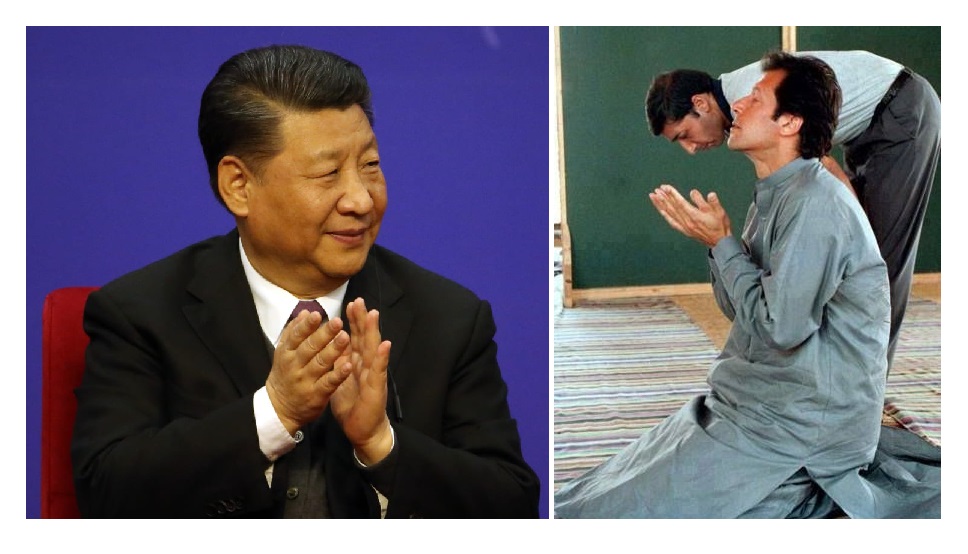
In a move aimed to change and challenge the status quo of the Indian Navy, China has given Pakistan advanced guided-missile frigate, the largest it has built for any country, equipped with state-of-the-art radars and missiles.
This development comes at a time when India is facing a potential two-front war with China and Pakistan as the former keeps escalating tensions in Ladakh.
As per reports, China has given Pakistan Type 054A/P, a guided-missile frigate which is the largest combat ship China has sold to a foreign navy. By 2021, the Pakistan navy is expected to receive three more similar warships, adding more muscle to its navy and give planners in the Indian Navy something to think about.
“The Type 054A is a multi-role frigate and is recognized as the backbone of the People’s Liberation Army Navy (PLAN) fleet of surface combatants with 30 vessels in commission. They have a length of 134 meters, a beam of 16 meters for a displacement of 4,000 tons,”, the navalnews.com reported.
The ships given to Pakistan are equivalent to the Talwar class guided missile frigates designed and built by Russia for the Indian Navy. India has six of these ships and there are plans to induct four more to bolster and secure our maritime defence. As reports, the Type-054 class is equipped with the state of the art surface, subsurface, anti-air weapons, combat management system, and sensors. These new ships will be the most advanced weapons platform in the hands of Pakistan’s surface navy.
The frigates given to Pakistan cost 350 million dollars and many are asking how Pakistan could afford this when it is in serious financial distress. But it is very clear, the intention of China is to arm Pakistan is to force India to split and spread its military resources. India has a much larger and modern navy because it has one of the largest coastlines in the world.
At present, China is the chief weapons supplier to Pakistan after the United States stopped giving modern weapons systems like the F-16 fighter jets. This gave China the opportunity to fill the void. It now controls Pakistan and is using it as a proxy against India. Think tanks that monitor the sale of weapons believe 73% of Pakistan’s arms came from China.
China is not only helping Pakistan modernise its air force and the navy, but it is also going to equip them with armed drones. China will supply four attack drones to Pakistan and along with 236 Howitzer guns. This deal was struck in December 2019, worth $512 million.
However, what is most significant development is the growing interoperability of weapons platforms between both nations. India just concluded a large naval exercise in the Bay of Bengal with the U.S Navy to have better communication and interoperability. Clear communication between allies is necessary during a crisis.
It must be noted that the timing of the sale of these advanced warships by China to Pakistan comes when Foreign Minister Shah Mahmood Qureshi met with his counterpart Wang Yi at the Chinese holiday resort of Hainan on August 21.
However, any sale of weapons to Pakistan by China must have come with caveats. There was growing resentment between Pakistan and China with regards to the China-Pakistan Economic Corridor (CPEC). The latter had accused it of not providing Chinese workers adequate security. With this deal in the bag, it would not come as a surprise if Pakistan makes more concessions to its territorial integrity.
Many strategic experts believe that CPEC is prepped for failure. However, it is now getting clear that China wants the Gwadar port to be its new naval base for PLAN near the strategic shipping lane of in the Strait of Hormuz, the Persian Gulf. This is the most sensitive waterway in the Middle East and can be used as a chokepoint for global oil supplies.

The Strait of Hormuz is a narrow waterway that links the Persian Gulf with the Gulf of Oman and the Arabian Sea. This is a very narrow waterway and is only 21 miles wide, and the width of the shipping lane in either direction is just 2 miles, separated by a 2-mile buffer zone.
As per a report from the U.S. Energy Information Administration, crude oil carrying tankers carrying from ports on the Persian Gulf must pass through the strait and on a daily bases, and estimated 21 million barrels of oil flows through it which is nearly a third of global seaborne oil trade and about 21% of global petroleum liquids consumption.
The new warships given to Pakistan are just part of a bigger plan by China and will act as its guardian in this region with Chinese officers in charge. It wants Pakistan as a counterbalance in the Arabian Sea and now is developing deep ties with Iran which on occasion threatened to block the crucial waterway.
Another aspect is the growing corporation between the navies of India, U.S, Japan and Australia in the Indian Ocean Region, the Pacific to stop China dominating in the South China Sea. China sees the Quad as a threat and India had previously refrained from inviting Australia. However, its bullish attitude has forced India to rethink its strategy of not doing anything to make the dragon angry.
The days of pacifying China are long gone and India has shown that it can stand up to any threat posed by both China and Pakistan. Derek Grossman, a senior defence analyst at the California-based Rand Corp said, “With India appearing poised to invite Australia to the Malabar naval exercises this year, the symbolism will not be lost on China. Having all four Quad members conducting a de facto Quad military exercise will demonstrate unified resolve to counter and compete with China across the Indo-Pacific and indeed the world.”
Sameer Lalwani, a South Asia expert at the Washington-based Stimson Center says, “If Australia is invited to join the Malabar exercises, it indeed would provide renewed optimism for military operationalization of the Quad. Also, there were significant U.S. and Indian guided-missile ships deployed together cannot go unnoticed and suggests the potential for formidable air defence and anti-submarine-warfare operations”.
China can give modern warships to Pakistan but India has more friends in the Association of Southeast Asian Nations (ASEAN) region who could also be part of future defence exercises.
It is clear that with the sale of advanced navy frigates to Pakistan, China is looking to make Pakistan a surrogate fighting force for China and an extension of its ambitious plan to have a Blue Water Navy.
This article was republished from Aseema with permission. Only the headlines has been changed. Read the original article here.




